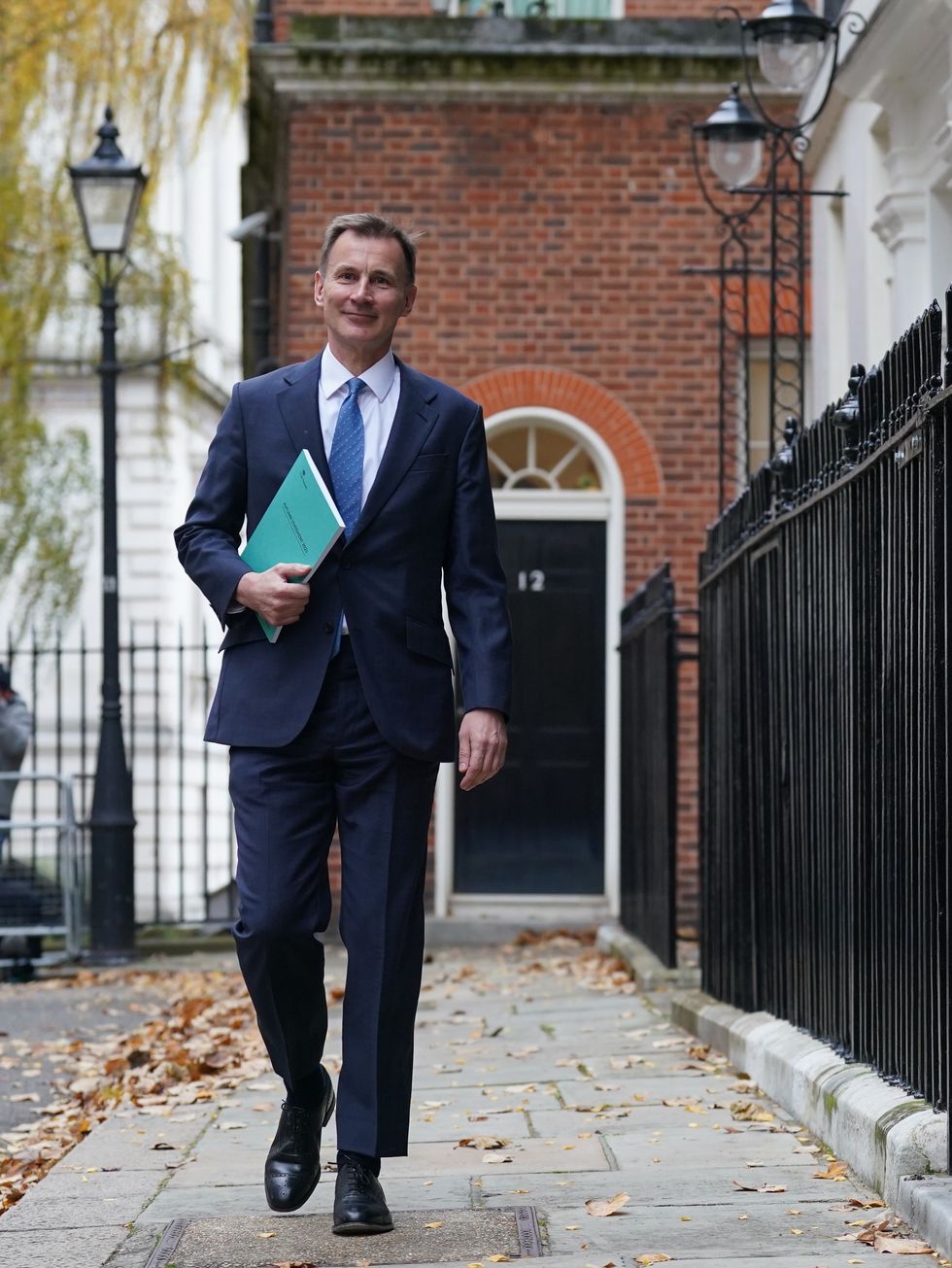Jeremy Hunt is delivering the Autumn Statement in the House of Commons
GB NEWS
Chancellor Jeremy Hunt did not address the change to Individual Savings Account (ISA) rules in his Autumn Statement speech today
Don't Miss
Most Read
Trending on GB News
Chancellor Jeremy Hunt has removed a “complexity” from the ISA system in a boost for savers looking to grow their money tax-free.
The Government will scrap the rule which permits savers to only pay into one ISA of the same type each tax year.
It means savers will be able to subscribe to more than one cash ISA in the same tax year from April.
Steven Cameron, Pensions Director at Aegon said: “Allowing individuals to save in more than one ISA of the same type per year removes one complexity from the ISA regime and will appeal to a wide group of savers and investors.”
WATCH NOW: Jeremy Hunt delivers Autumn Statement in the House of Commons
He added: “It’s most likely to appeal to those who want to find the most competitive cash ISA rate to use up the remainder of their annual allowance.
“Ironically, this will do little to support the Chancellor’s growth agenda which relies on more investment in stocks and shares.”
Under current rules, savers can only put a total of £20,000 into ISAs in one tax year, and they can only pay into one of each type of ISA during this period.
There are several types of ISAs: Cash ISAs, stocks and shares ISAs, innovative finance ISAs, and Lifetime ISAs (which have an annual limit of £4,000). There are also Junior ISAs for children.
It means savers can only pay into one form of cash ISA between April 6 and April 5 each tax year.
As people can’t pay into two of the same type of ISA in the same tax year, savers have been stuck if substantially better interest rates are offered on another cash ISA during that time.
Rising interest rates and the frozen personal savings allowance have meant some savers are facing being taxed on relatively modest pots of cash.
Jason Hollands, Managing Director of investment platform Bestinvest, said the new measures, including allowing accounts to be opened with multiple providers of the same type during a tax year from next April, allowing partial transfers to be made in-year, and making ownership of fractional shares eligible for ISAs, are “broadly welcome measures”.
He said while the plans provide “greater flexibility”, they “do not amount to the radical shake-up being mooted just weeks ago”.
Mr Hollands also addressed the Government opting against increasing the annual ISA allowance.
He said: “It was disappointing to see that the ISA allowance will remain frozen at £20,000 per adult, a level it has been stuck at since the 2017/18 tax year. To restore the real value of the allowance to where it was then, it would need to increase to at least £25,760 to adjust for the effect of CPI inflation since April 2017.
“Tax-free ISAs are more important than ever before for savers and investors because of the steep cuts the Chancellor has made to the annual dividend allowance and capital gains exemptions, both of which are still set to halve again next April despite the Conservatives repositioning themselves as tax-cutters.”
LATEST DEVELOPMENTS:

Jeremy Hunt is delivering the Autumn Statement in the House of Commons today
PA
Tobias Gruber, founder and CEO of My Community Finance, also expressed disappointment the annual ISA allowance will not be increased.
He said: “For savers who have grappled with rising inflation this year, it’s a real shame the government have not increased the ISA limit.
“In times where every penny makes a difference, the move would have meant savers got to keep more of their hard-earned money.”
Mr Gruber urged people to make sure their money is working as hard as possible, and not at risk of being unnecessarily taxed.
He said: “To make the most of these changes, savers should proactively explore different savings options to find the best deals suited to their needs.
“Shopping around for competitive interest rates and exploring various savings options can maximise the benefits of your ISA limit.
“Informed choices about where to invest your savings can make a substantial difference in your long-term financial stability.”








